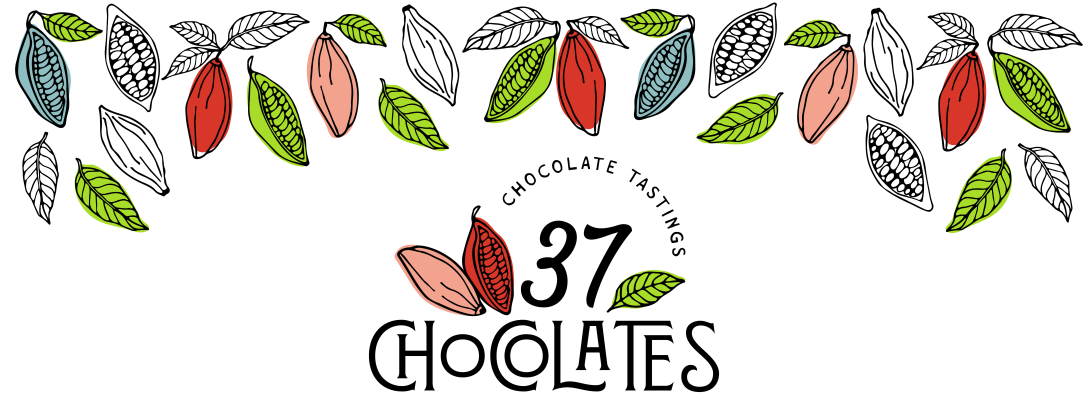
At a recent chocolate lecture, I asked the crowd what each type of chocolate evoked to them. White chocolate? Not real chocolate (ahem.) Milk chocolate? Sweet. When I said “dark chocolate”, the answer was unanimous: bitter. I wasn’t really surprised. The first time I tried a 99% bar, I almost spit it up. Thankfully, the 37 Chocolates challenge made me realize that a good dark chocolate didn’t have to taste bitter. In fact, some beans make an excellent 100% dark chocolate bar, without a trace of bitterness. So, why are some dark chocolate bars bitter? To answer that question, we need to look at the ingredients in chocolate.
To make chocolate, you need cacao or cocoa beans (it’s really the same thing.) Genetics, fermentation, and roasting will all impact chocolate flavor. Cacao is an agricultural product and not all beans are created equal. Just like a Granny Smith apple is more acidic than a Gala, some cacao beans are more bitter than others. Fermentation is a complicated topic, but it’s easy to imagine the results of bad fermentation (mold.)
Now, let’s take a look at roasting. I had long heard rumors of big companies over-roasting their beans, but I’d never seen evidence of that. All of this changed last summer when I got my hands on a roasted cacao bean husk* from a very large chocolate company. I won’t tell you which one, but I bet you can guess.
On my left, a roasted cacao bean husk from that large chocolate company. On my right, a cocoa bean from Sierra Nevada in Colombia roasted by much smaller, award-winning chocolate company. The bean on the left was over-roasted, to the point of being burnt. What does burnt food taste like?
Bitter.
However, dark chocolate doesn’t have to taste bitter. The combination of quality cacao beans, careful fermentation, and gentle roasting can create beautiful, intense, but not bitter dark chocolate. Granted, those bars won’t cost the same as industrial chocolate, but which color cacao bean would you rather put in your body? So head to your local coffee shop or specialty food store and start browsing the chocolate section. Your taste buds will thank you.
* The husk is the outside part of a cacao bean, one that is removed and discarded during the chocolate-making process (the fancy name is “winnowed.”) Inside the husk is the cacao nib, which will ground into chocolate.
If you liked this article, sign up to my newsletter to be notified of future blog updates.


Wow that is indeed a very dark roast on the left! Most people who are accustomed to dark industrial chocolate are very surprised when they taste our high percentage bars. “It’s not bitter” is a common response.
I know, that husk is almost burnt! I hear similar responses too when I offer some fine 80% dark chocolate bars. Some people are even surprised to like chocolate with 100% Madagascar beans.
[…] with gently roasted cacao beans. Over-roasting will cause bitter compounds to develop (see this bean comparison post for an explicit visual), which will indeed clash with your red wine. My suggestion? Skip the candy aisle and get some […]
[…] with gently roasted cacao beans. Over-roasting will cause bitter compounds to develop (see this bean comparison post for an explicit visual), which will indeed clash with your red wine. My suggestion? Skip the candy aisle and get some […]
[…] Add your comments to this thread and get in the game! Let’s see how you use bitters.Avocado dark chocolate puddinghttps://chocolatecoveredkatie.com/avocado-chocolate…/Ginger shotshttps://www.alphafoodie.com/lemon-ginger-and-cayenne…/Sources: https://www.wellandgood.com/bitter-foods/https://www.healthyhildegard.com/17-bitter-foods/https://thegardeningcook.com/growing-ginger/https://www.geturbanleaf.com/…/growing-avocado-indoorshttps://37chocolates.com/…/22/what-makes-chocolate-bitter/ […]
You’re spot on, man! I didn’t know 90% choco wasn’t all bitter until I switched from Lindt to some indie brands. Started checking and copping two bars from different brands at once, and yo, this Italian joint Zaini is fire! Sooo delicious!